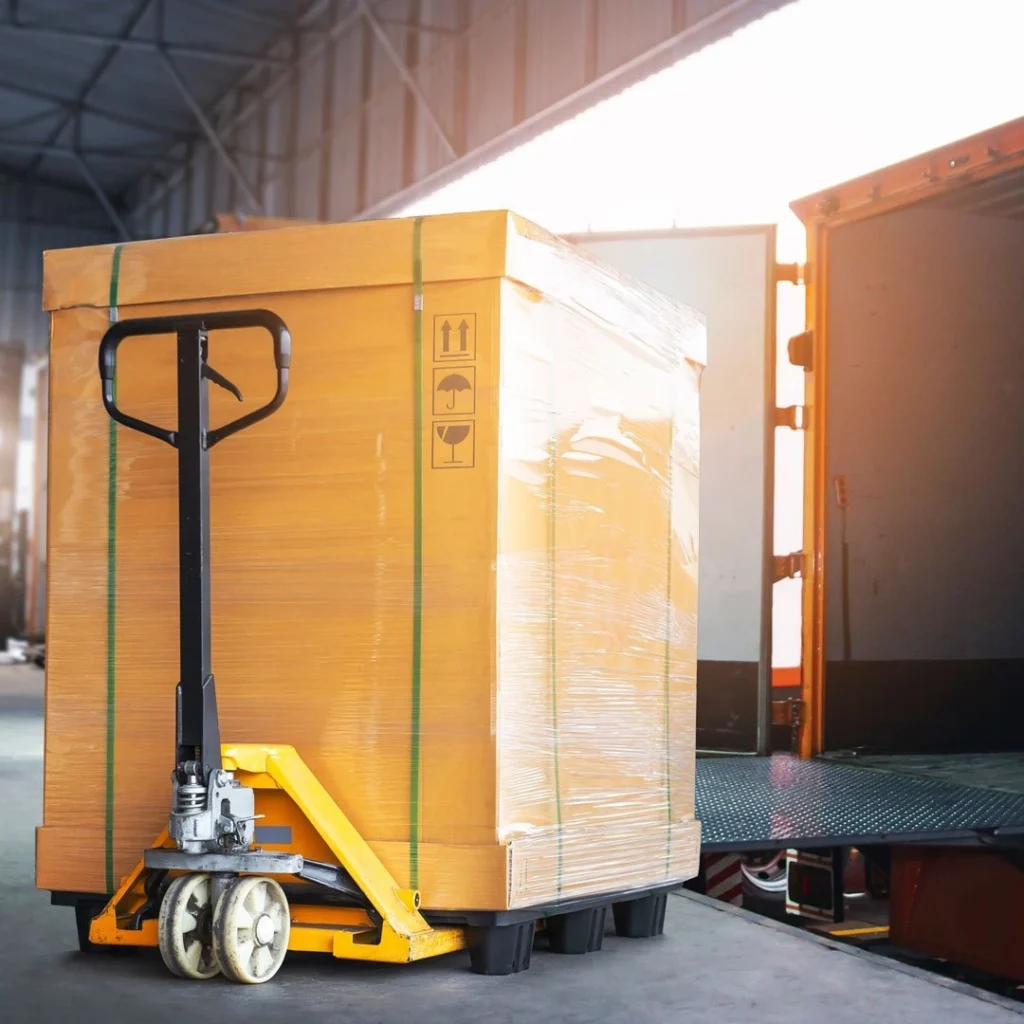Ups Shipping Zones: What Are They?
Learn all about Ups Shipping Zones and how they work. Read on to understand how UPS shipping zones are determined, its importance, and significance, and how it affects shipping logistics.

Ups Shipping Zones: What Are They?
Ups Shipping Zones are geographical regions designated by UPS to facilitate the efficient transportation and delivery of packages.
These zones help UPS streamline its operations and ensure timely deliveries by categorizing destinations based on their proximity to the point of origin.
By understanding how Ups Shipping Zones work, businesses and individuals can make informed decisions when it comes to shipping packages, saving both time and money.
READ ALSO!!!
How Ups Shipping Zones Are Determined
UPS, short for United Parcel Service, is one of the largest and most reputable shipping carriers globally, facilitating the transportation and delivery of packages to various destinations.
The UPS shipping network is vast and complex, ensuring timely deliveries across the United States and internationally.
To efficiently manage its extensive operations, UPS has divided the United States into distinct shipping zones. These zones are determined based on specific criteria, which we will explore in detail.
Understanding how UPS shipping zones are determined is crucial for businesses that rely on UPS services, as it directly impacts shipping costs and delivery times.
The Significance of Ups Shipping Zones
Here are some major significance of UPS shipping zones:
1. Efficient Delivery Times
Ups Shipping Zones play a vital role in ensuring efficient delivery times. Packages destined for nearby zones can be transported and delivered more quickly than those going to distant zones.
This segmentation enables UPS to optimize its delivery routes and minimize transit times, enhancing customer satisfaction.
2. Cost-Effective Shipping
Understanding Ups Shipping Zones can help businesses save on shipping costs. Since zones are determined based on proximity, shipping to nearby zones is often more economical than sending packages to distant ones.
By strategically planning shipments according to these zones, businesses can reduce shipping expenses significantly.
3. Logistics Planning
Ups Shipping Zones are a cornerstone of UPS’s logistics planning. They allow UPS to allocate resources effectively, distribute packages efficiently, and manage their shipping operations with precision.
This optimization leads to smoother logistics and fewer delays in the delivery process.
The Impact of Ups Shipping Zones on E-Commerce
In the era of e-commerce, where online shopping has become the norm, Ups Shipping Zones have become even more critical.
E-commerce businesses rely heavily on efficient shipping to meet customer expectations and gain a competitive edge. Here’s how Ups Shipping Zones impact the e-commerce landscape:
1. Expedited Deliveries
UPS Shipping Zones are based on geographic proximity, dividing regions into different zones based on the distance from the shipping origin.
E-commerce companies can leverage this zoning system to offer expedited shipping options to customers located in nearby zones.
For example, if a customer’s location falls within Zone 2 (closer to the shipping origin), they can opt for expedited shipping services like UPS Next Day Air or UPS 2nd Day Air, which guarantee faster delivery times.
By providing expedited shipping options, e-commerce businesses can meet the growing demand for quicker deliveries, especially for time-sensitive or urgent orders.
Quicker delivery times can lead to increased customer satisfaction and loyalty, as customers are more likely to return to a retailer that consistently meets their expectations for fast shipping.
2. Real-Time Shipping Estimates:
One of the challenges in e-commerce is setting accurate delivery expectations for customers.
UPS Shipping Zones enable e-commerce platforms to calculate and display real-time shipping estimates during the checkout process.
By factoring in the customer’s location and the corresponding shipping zone, the platform can provide more precise delivery timelines. Real-time shipping estimates enhance transparency and help manage customer expectations.
Customers can see the estimated delivery date before completing their purchase, allowing them to make informed decisions based on when they need the product.
This feature is particularly valuable for time-sensitive purchases and can reduce customer inquiries related to shipping times.
3. Warehousing and Fulfillment:
Strategic warehousing and fulfillment center placement is a crucial aspect of optimizing e-commerce operations.
By utilizing UPS Shipping Zones, businesses can strategically position their warehouses and fulfillment centers in different zones across the country or region.
Storing inventory in multiple locations allows e-commerce companies to distribute their products more efficiently.
When a customer places an order, the fulfillment center closest to their location can handle the order, leading to reduced shipping distances and faster deliveries.
This approach is commonly known as “distributed warehousing” or “multi-warehouse fulfillment.” Faster deliveries not only contribute to improved customer satisfaction but also result in reduced shipping costs.
Shipping costs are often determined by the distance a package needs to travel, so having warehouses strategically placed in UPS Shipping Zones can help minimize transportation expenses.
READ ALSO!!!
- The Guide to UPS Overnight Shipping
- How to Ship Furniture With Ups
- USPS Redelivery Tracking: What to Do
The Role of Ups Shipping Zones in Sustainability
In recent years, environmental concerns have become a significant focus for businesses worldwide. Ups Shipping Zones also contribute to sustainability efforts in the following ways:
1. Reduced Carbon Footprint
One of the significant ways in which UPS Shipping Zones contribute to sustainability is by actively reducing their carbon footprint. UPS achieves this by optimizing shipping routes and minimizing transit distances.
When packages are delivered through efficient routes, it not only saves time and resources but also significantly reduces greenhouse gas emissions.
By embracing an eco-friendly approach to shipping, UPS aligns with its commitment to environmental sustainability.
This focus on reducing carbon emissions not only benefits the environment but also helps build a positive brand image for UPS, making it an attractive choice for environmentally-conscious customers.
2. Energy Efficiency
Efficiency is at the core of UPS’s shipping operations, and this extends to their use of energy.
Through the strategic implementation of UPS Shipping Zones, the company can manage shipping operations more efficiently, leading to reduced fuel consumption and energy usage.
By optimizing its energy consumption, UPS not only improves its bottom line but also sets a benchmark for other logistics companies to follow.
This commitment to energy efficiency sets a positive example for the industry and showcases UPS’s dedication to sustainable practices.
3. Resource Conservation

In addition to reducing their carbon footprint, UPS Shipping Zones also play a vital role in conserving valuable resources.
By streamlining shipping routes and employing advanced logistics technology, UPS minimizes the waste of resources like fuel, packaging materials, and time.
Resource conservation not only benefits the environment but also contributes to cost savings for UPS and its customers.
This cost-effectiveness can lead to more competitive pricing, making UPS an attractive choice for businesses looking to make sustainable shipping choices without compromising on efficiency.
4. Emission Reduction Targets
UPS has set ambitious emission reduction targets to further support global sustainability efforts.
By incorporating UPS Shipping Zones into its operations, the company can better track and manage its emissions, making it easier to achieve and surpass these targets.
These emission reduction goals go beyond regulatory requirements and demonstrate UPS’s proactive approach to environmental stewardship.
Such proactive measures can resonate with environmentally-conscious consumers and businesses, thereby enhancing UPS’s reputation and market position.
5. Collaboration with Partners
UPS understands that sustainability is a collective effort that requires collaboration with various stakeholders.
Through the utilization of UPS Shipping Zones, the company can work closely with partners, suppliers, and customers to create a sustainable supply chain.
By encouraging suppliers and partners to adopt sustainable practices, UPS contributes to a more significant positive impact on the environment.
This approach fosters a sense of responsibility throughout the supply chain, benefiting the planet and society as a whole.
6. Continuous Innovation
To maintain its position as a leader in sustainable shipping, UPS continuously invests in research and innovation.
The company actively explores and implements advanced technologies to further optimize its shipping operations and reduce environmental impact.
The incorporation of UPS Shipping Zones is part of this broader innovative approach. By staying at the forefront of sustainable shipping solutions, UPS sets a high standard for the industry and inspires others to follow suit.
7. Customer Engagement and Education
UPS recognizes that sustainability goes hand in hand with customer engagement and education.
By highlighting the role of UPS Shipping Zones in sustainability efforts, the company educates its customers about the positive impact of their shipping choices.
This increased awareness allows customers to make informed decisions, and they can feel good about supporting a company that values sustainability.
In turn, this enhances customer loyalty and can attract new environmentally-conscious customers to UPS.
Conclusion
Ups Shipping Zones play a vital role in the efficient transportation and delivery of packages, benefiting both shipping companies and customers alike.
By understanding how Ups Shipping Zones work and their significance in the shipping industry, businesses can make informed decisions to optimize their shipping processes and improve customer satisfaction.
With UPS’s commitment to sustainability and energy efficiency, Ups Shipping Zones also contribute to environmental conservation efforts.
So, the next time you send or receive a package through UPS, you’ll have a better appreciation for the intricate system of Ups Shipping Zones that make it all happen!
